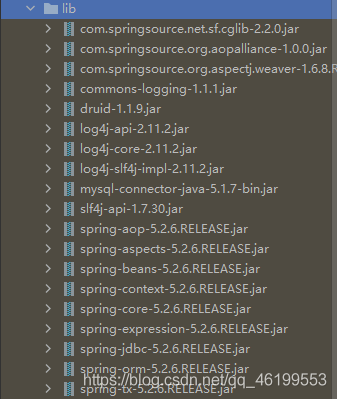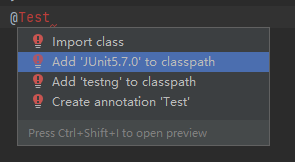Spring5 框架新功能(Webflux)

第二步 创建 log4j2.xml 配置文件
<?xml version="1.0" encoding="UTF-8"?>
<configuration status="INFO">
<appenders>
<console name="Console" target="SYSTEM_OUT">
<PatternLayout pattern="%d{yyyy-MM-dd HH:mm:ss.SSS} [%t] %-5level %logger{36} - %msg%n"/>
</console>
</appenders>
<loggers>
<root level="info">
<appender-ref ref="Console"/>
</root>
</loggers>
</configuration>
也可以通过手动配置还进行编写
package TestAOP;
import org.slf4j.Logger;
import org.slf4j.LoggerFactory;
public class UserLog {
private static final Logger log= LoggerFactory.getLogger(UserLog.class);
public static void main(String[] args){
log.info("hello log4j2");
log.warn("hello log4j2");
}
}
3、Spring5 框架核心容器支持 @Nullable 注解
(1)@Nullable 注解可以使用在方法上面,属性上面,参数上面,表示方法返回可以为空,属性值可以
为空,参数值可以为空
(2)注解用在方法上面,方法返回值可以为空
在测试类上 ApplicationContext 的类中,源码如下:
//
// Source code recreated from a .class file by IntelliJ IDEA
// (powered by FernFlower decompiler)
//
package org.springframework.context;
import org.springframework.beans.factory.HierarchicalBeanFactory;
import org.springframework.beans.factory.ListableBeanFactory;
import org.springframework.beans.factory.config.AutowireCapableBeanFactory;
import org.springframework.core.env.EnvironmentCapable;
import org.springframework.core.io.support.ResourcePatternResolver;
import org.springframework.lang.Nullable;
public interface ApplicationContext extends EnvironmentCapable, ListableBeanFactory, HierarchicalBeanFactory, MessageSource, ApplicationEventPublisher, ResourcePatternResolver {
@Nullable
String getId();
String getApplicationName();
String getDisplayName();
long getStartupDate();
@Nullable
ApplicationContext getParent();
AutowireCapableBeanFactory getAutowireCapableBeanFactory() throws IllegalStateException;
}
(3)注解使用在方法参数里面,方法参数可以为空
public <T> void registerBean(@Nullable String beanName, Class<T> beanClass, @Nullable Supplier<T> supplier, BeanDefinitionCustomizer... customizers) {
this.reader.registerBean(beanClass, beanName, supplier, customizers);
}
(4)注解使用在属性上面,属性值可以为空
@Nullable
private String bookName;
GenericApplicationContext
测试类代码如下:
//函数式创建对象,交给 spring 进行管理
@Test
public void testGenericApplicationContext(){
//创建一个 GenericApplicationContext 对象
GenericApplicationContext context=new GenericApplicationContext();
//调用 context 的方法对象进行注册
context.refresh();
context.registerBean("hello",User.class,()->new User());
// context.getBean("user");
User user = (User)context.getBean("hello");
System.out.println(user);
}
(1)整合 JUnit4
第一步 引入 Spring 相关针对测试依赖。

第二步 创建测试类,使用注解方式完成
@RunWith(SpringJUnit4ClassRunner.class) //单元测试框架
@ContextConfiguration("classpath:bean1.xml") //加载配置文件
public class JTest4 {
@Autowired
private UserService userService;
@Test
public void test1() {
userService.accountMoney();
} }
(2)Spring5 整合 JUnit5
第一步 引入 JUnit5 的 jar 包

@ExtendWith(SpringExtension.class)
@ContextConfiguration("classpath:bean1.xml")
public class JTest5 {
@Autowired
private UserService userService;
@Test
public void test1() {
userService.accountMoney();
} }
(3)使用一个复合注解替代上面两个注解完成整合
@SpringJUnitConfig(locations = "classpath:bean1.xml")
public class JTest5 {
@Autowired
private UserService userService;
@Test
public void test1() {
userService.accountMoney();
} }












评论